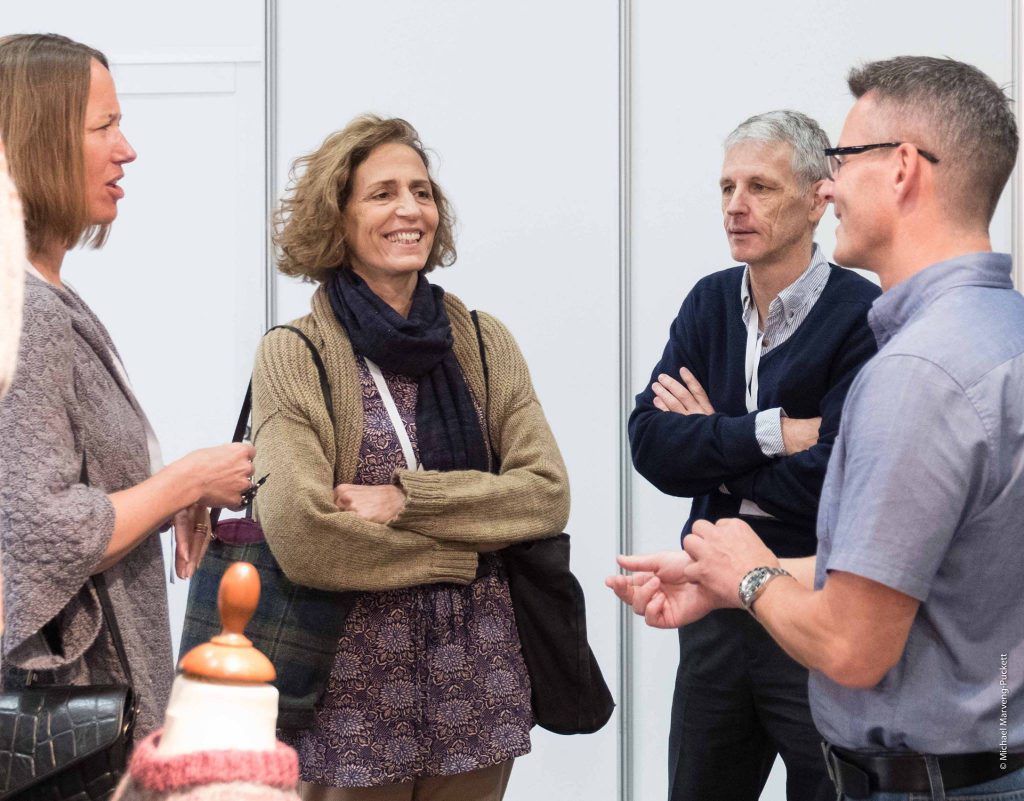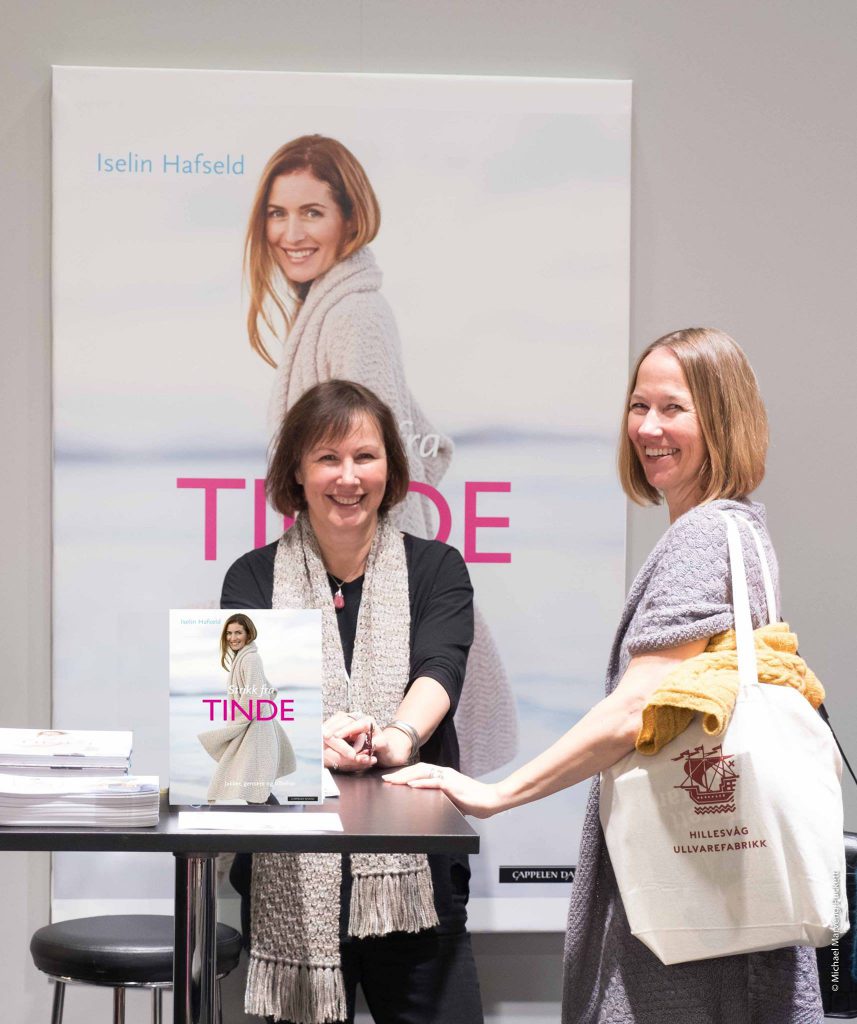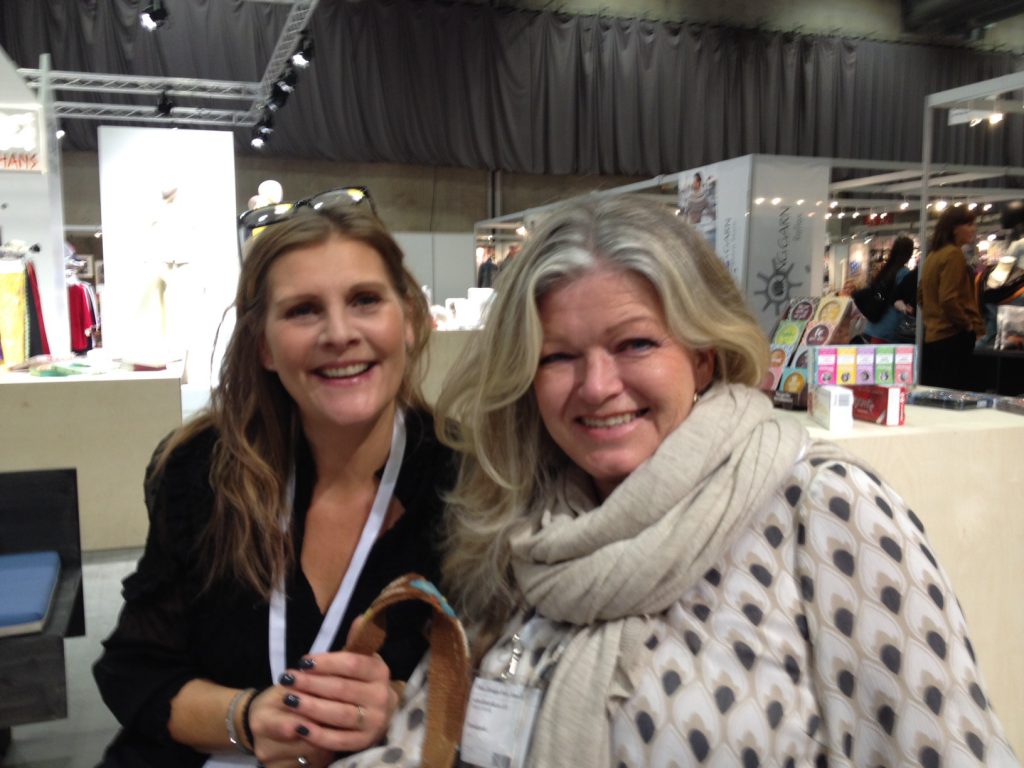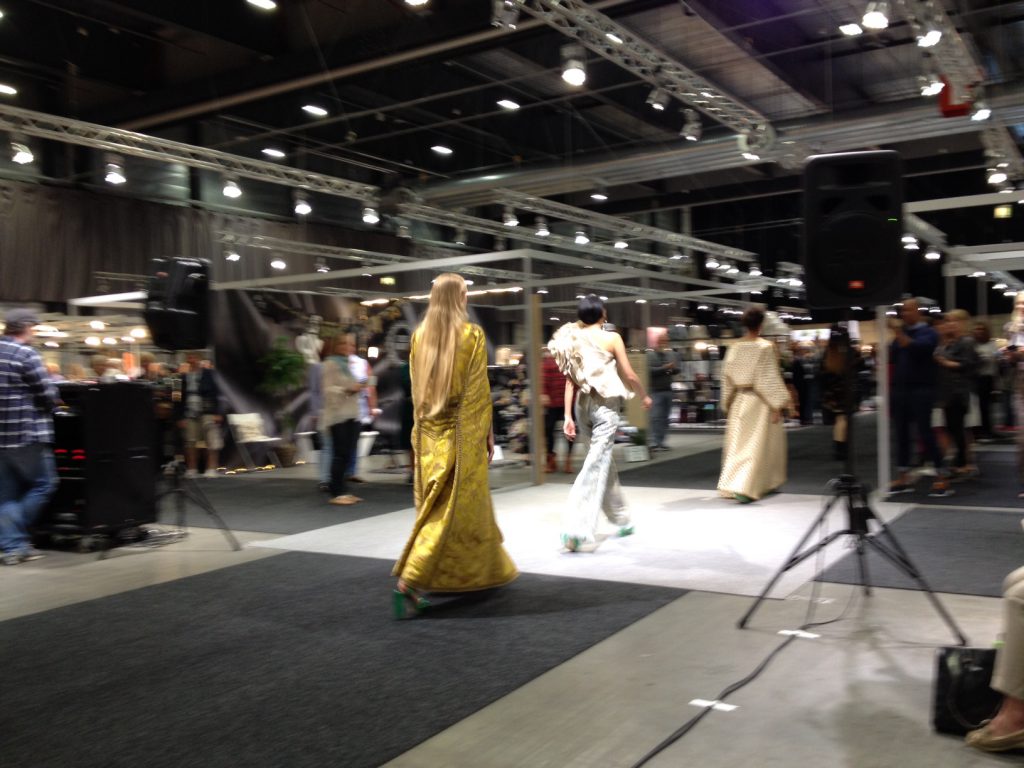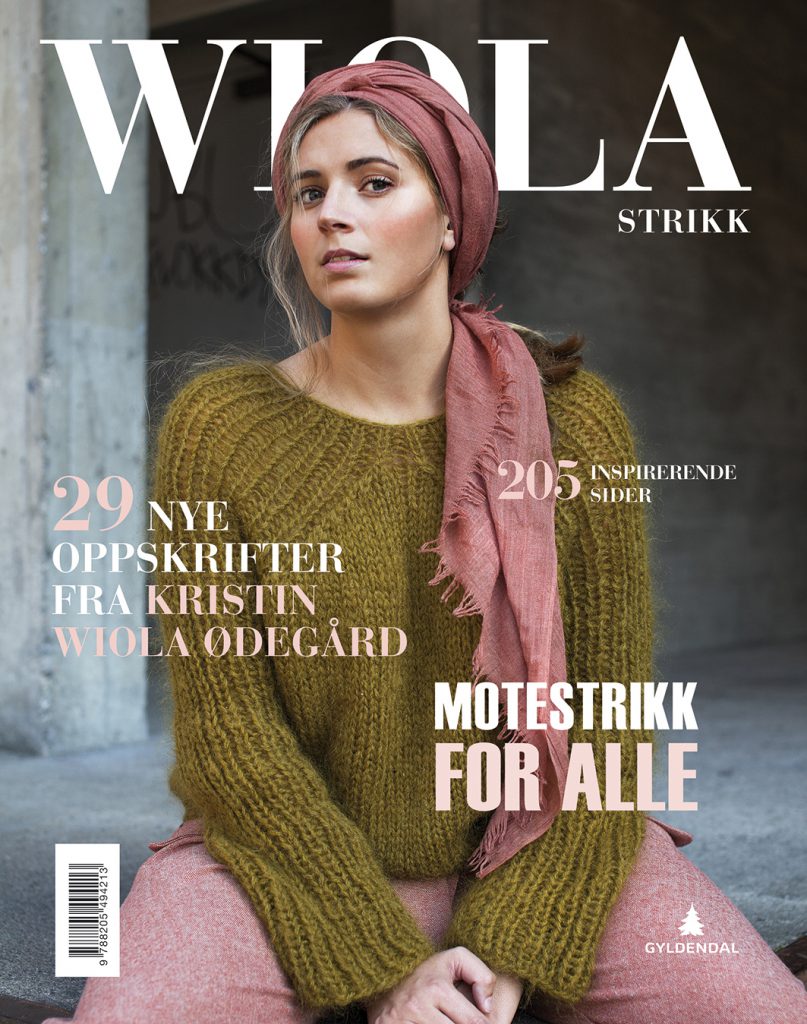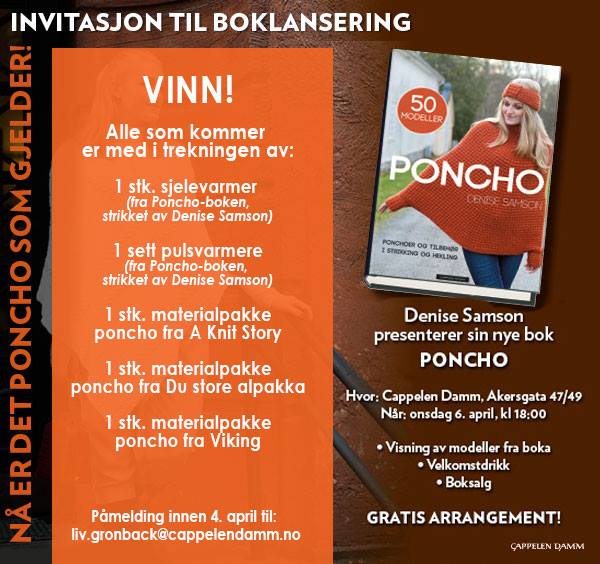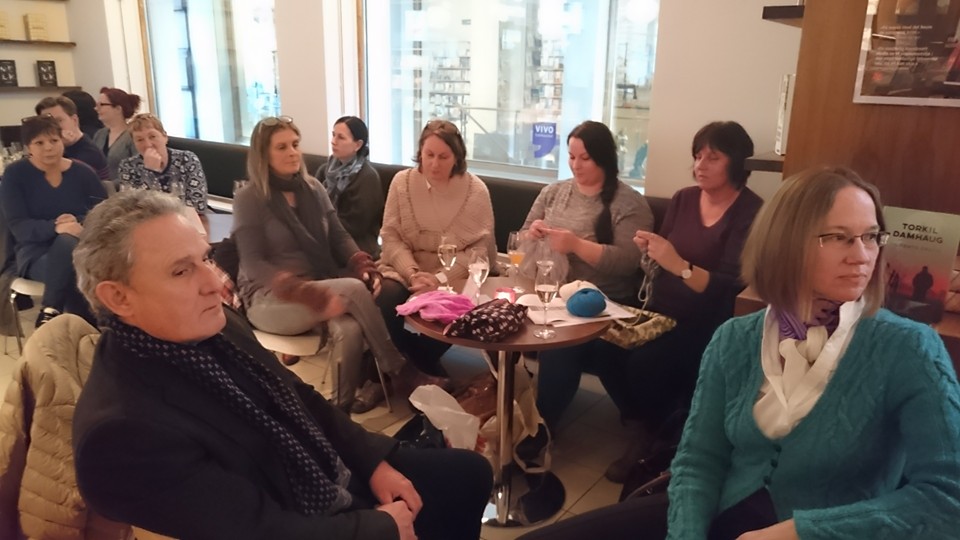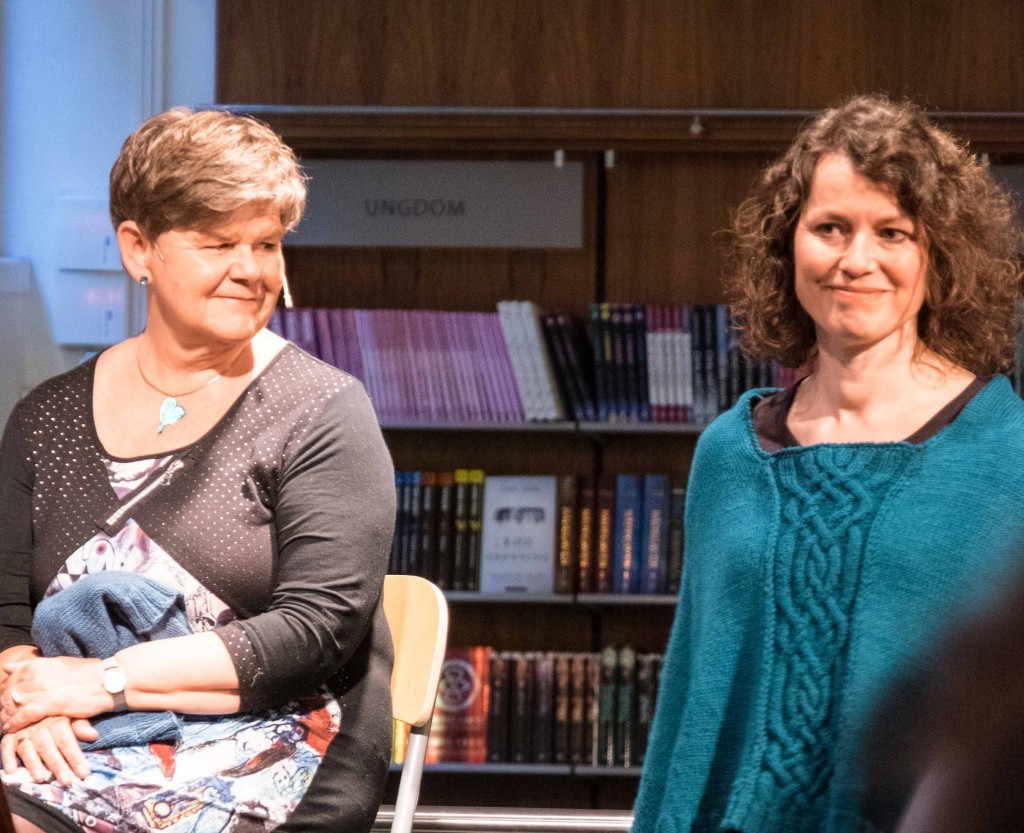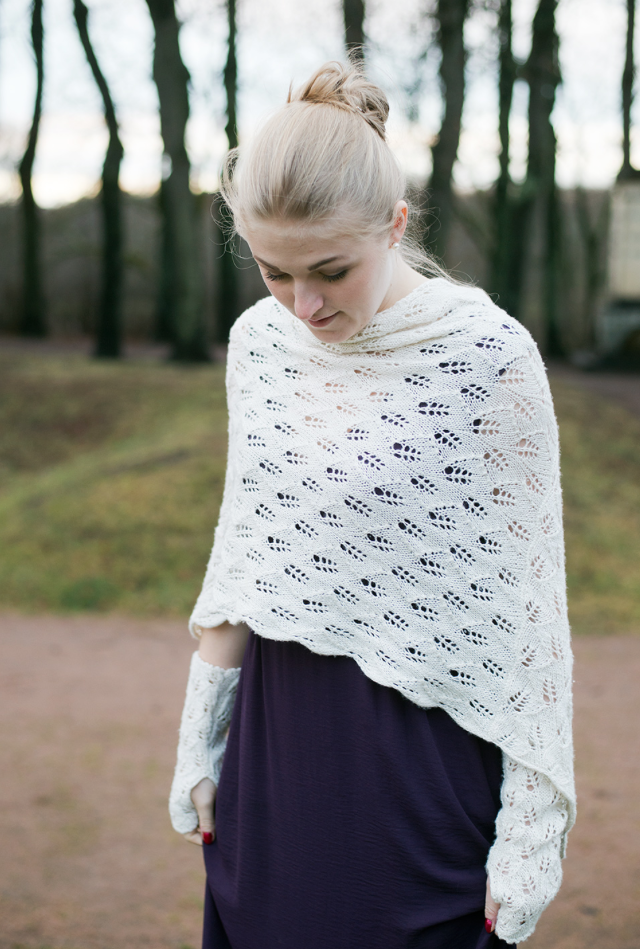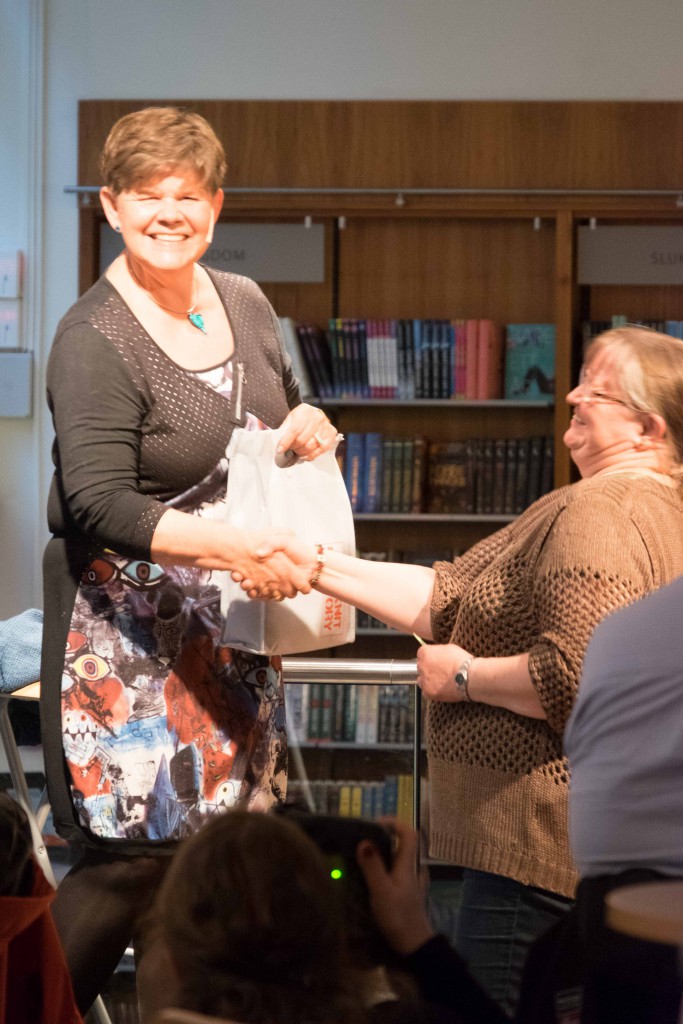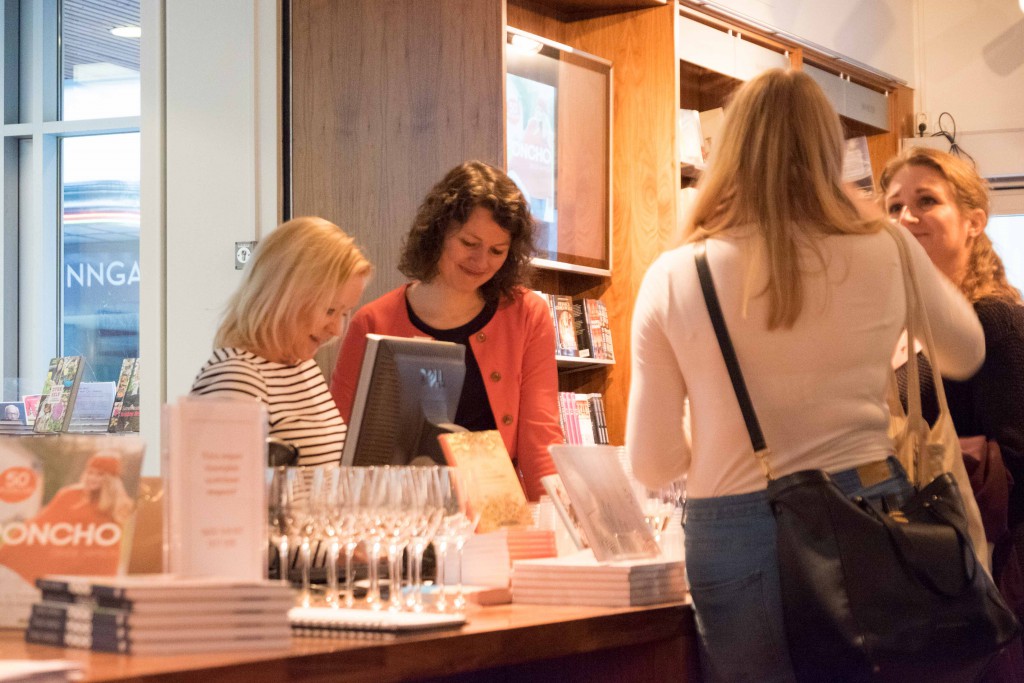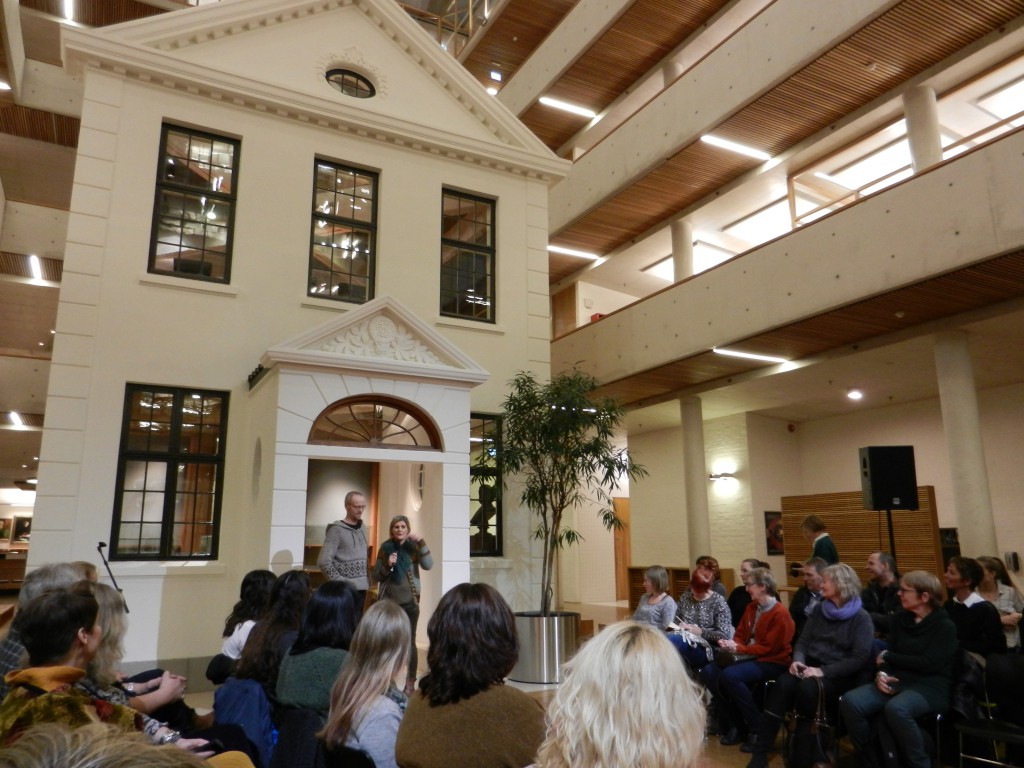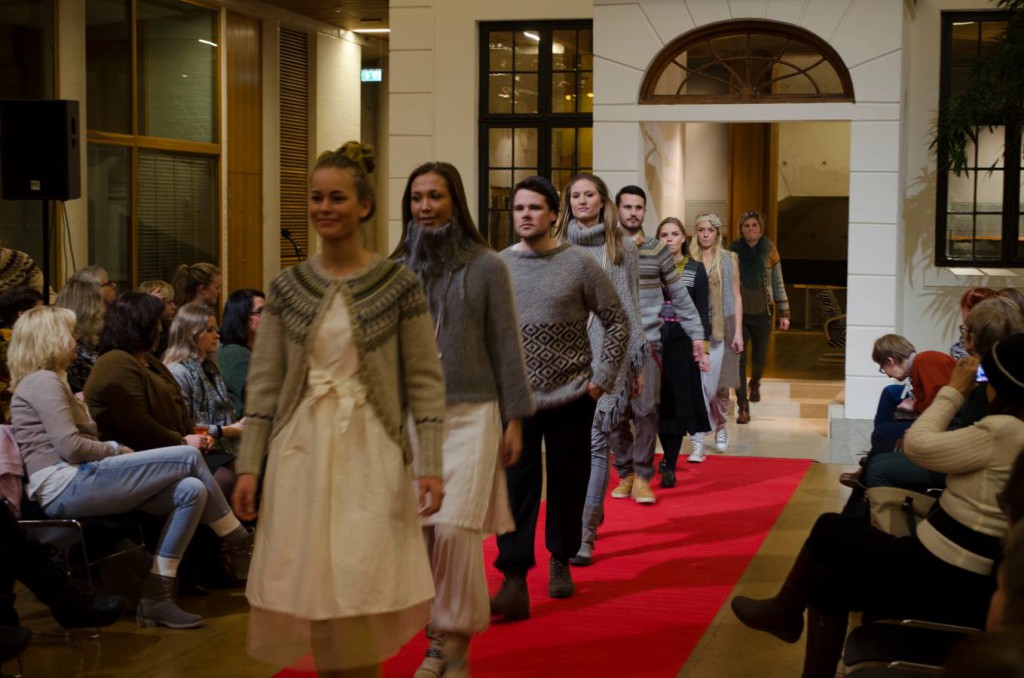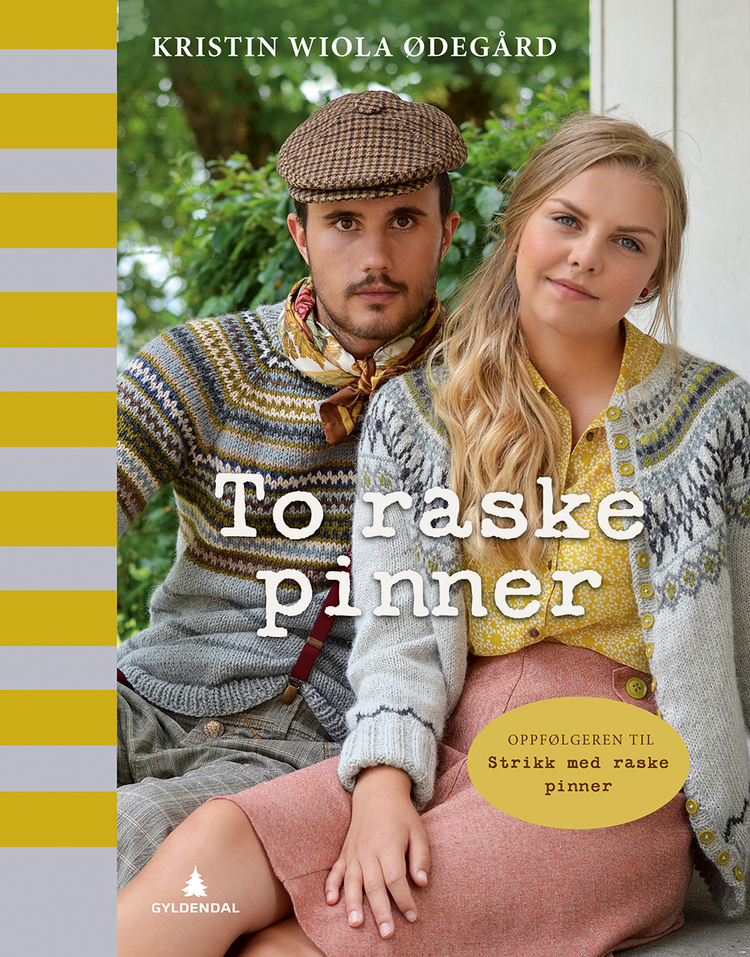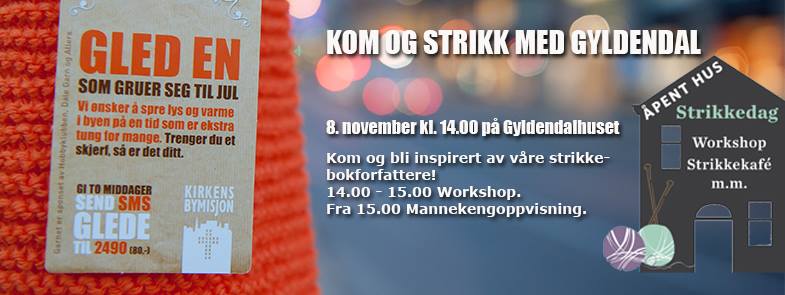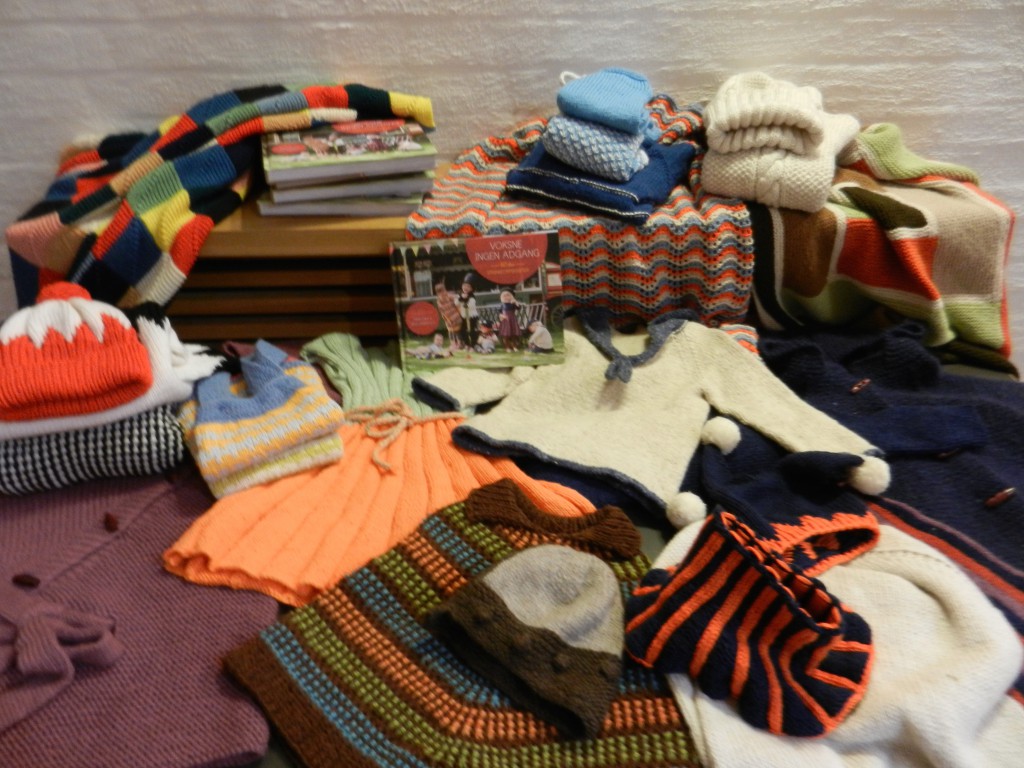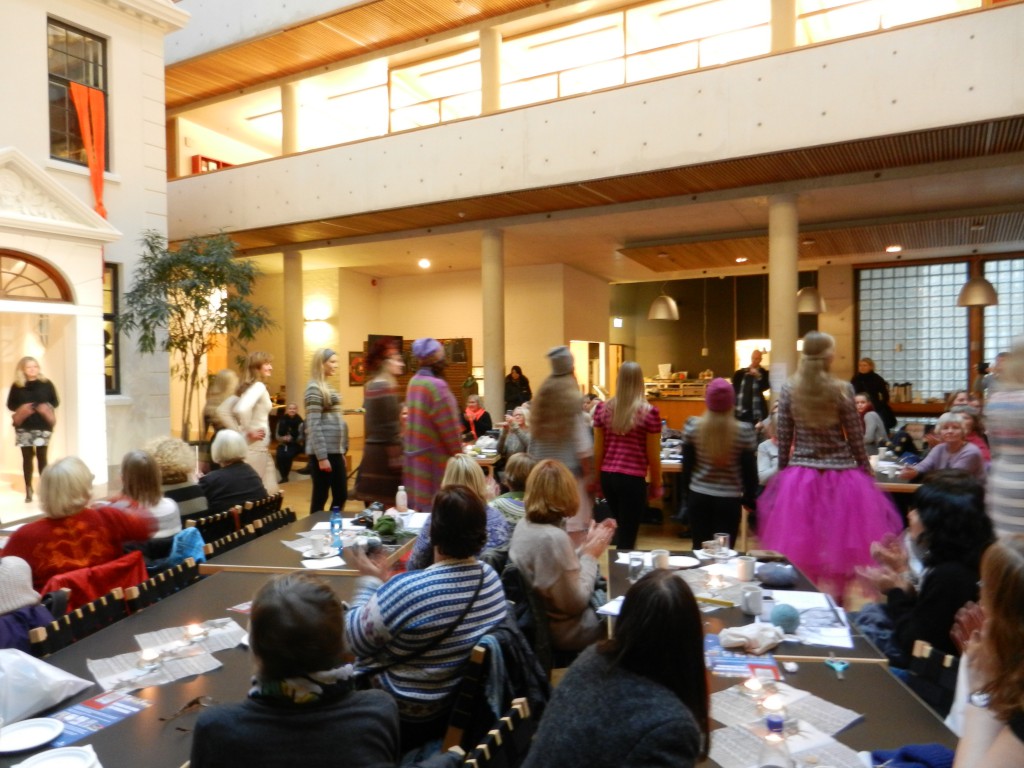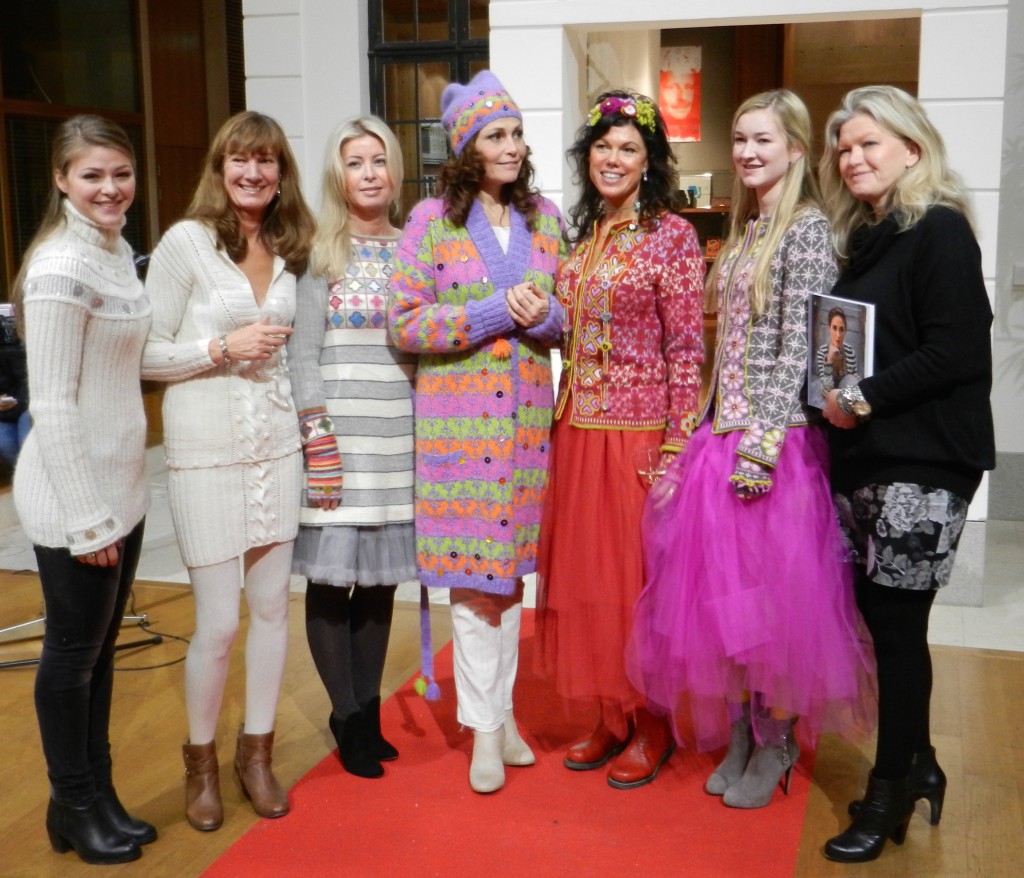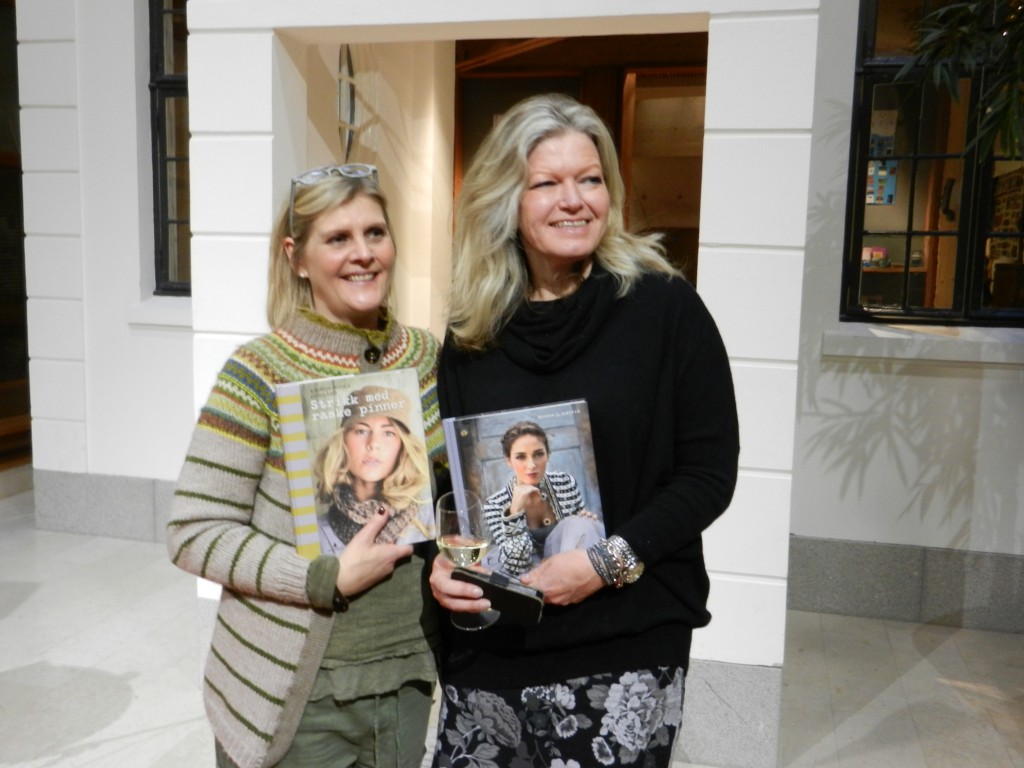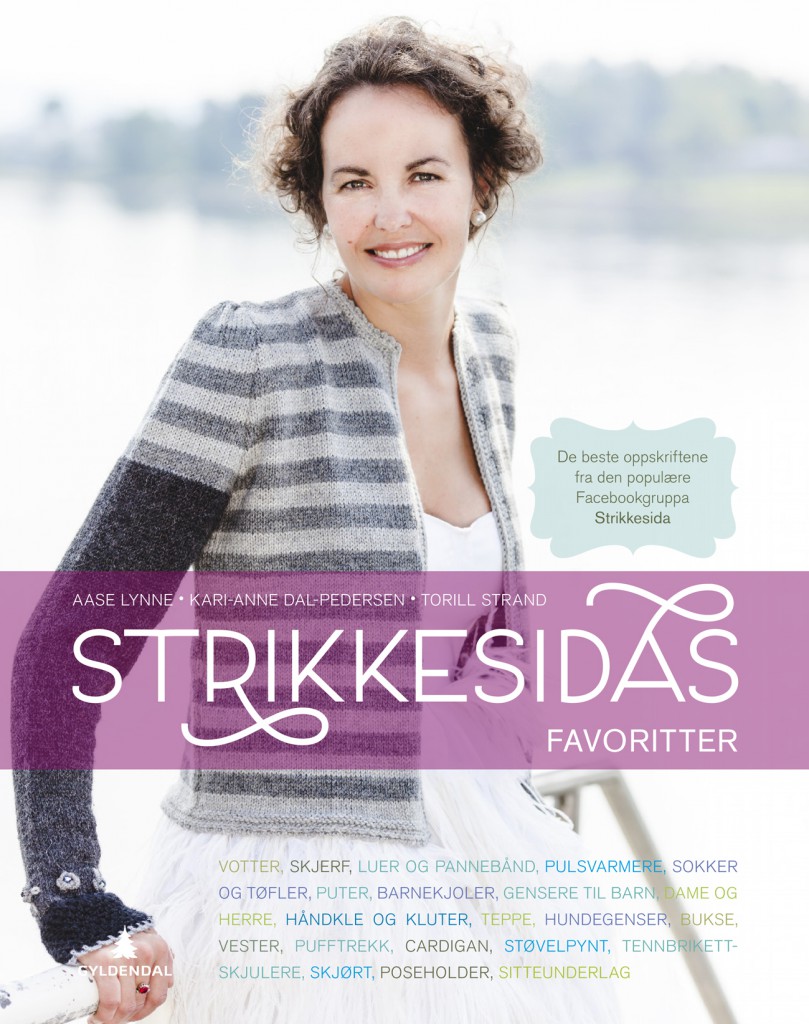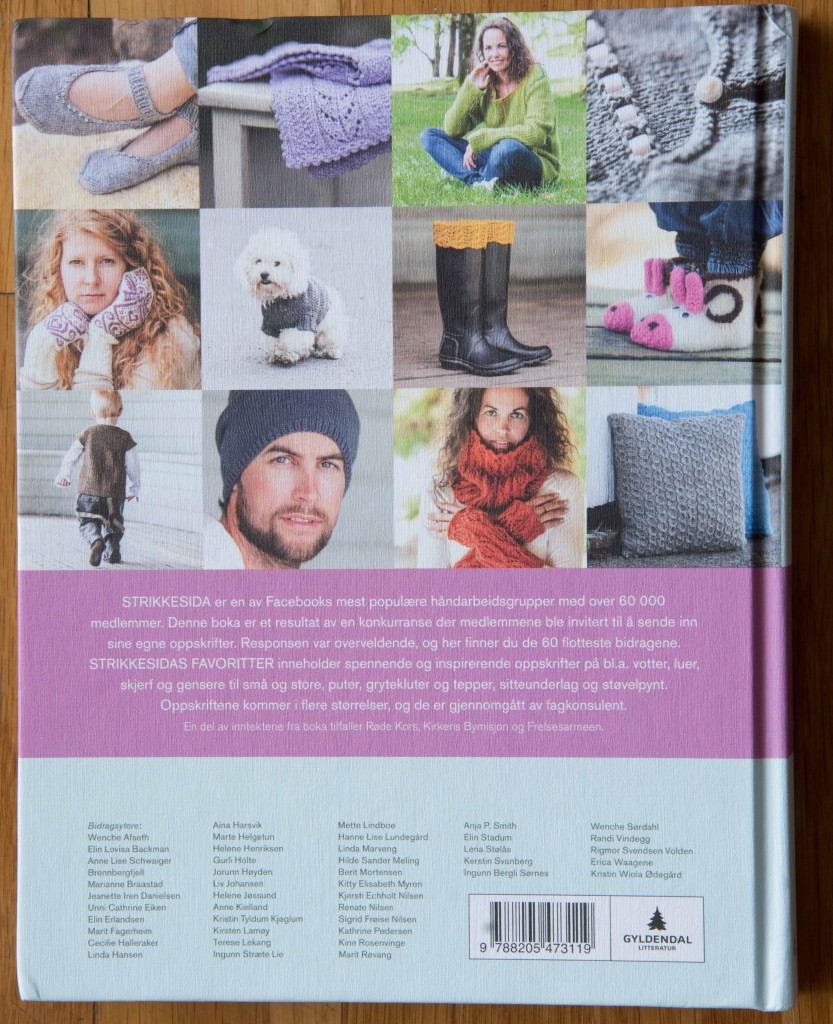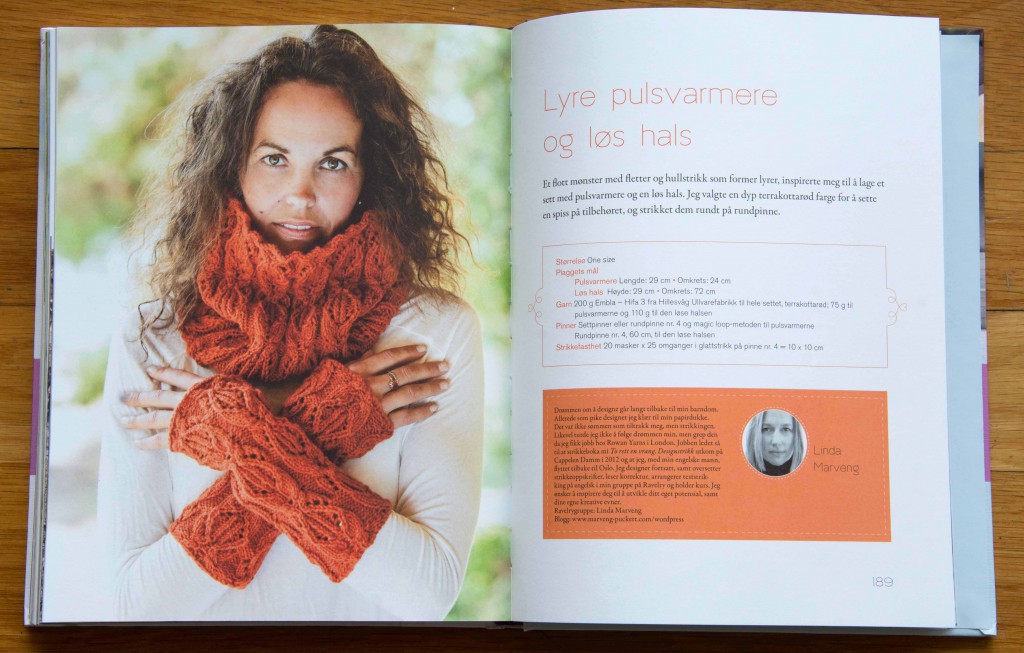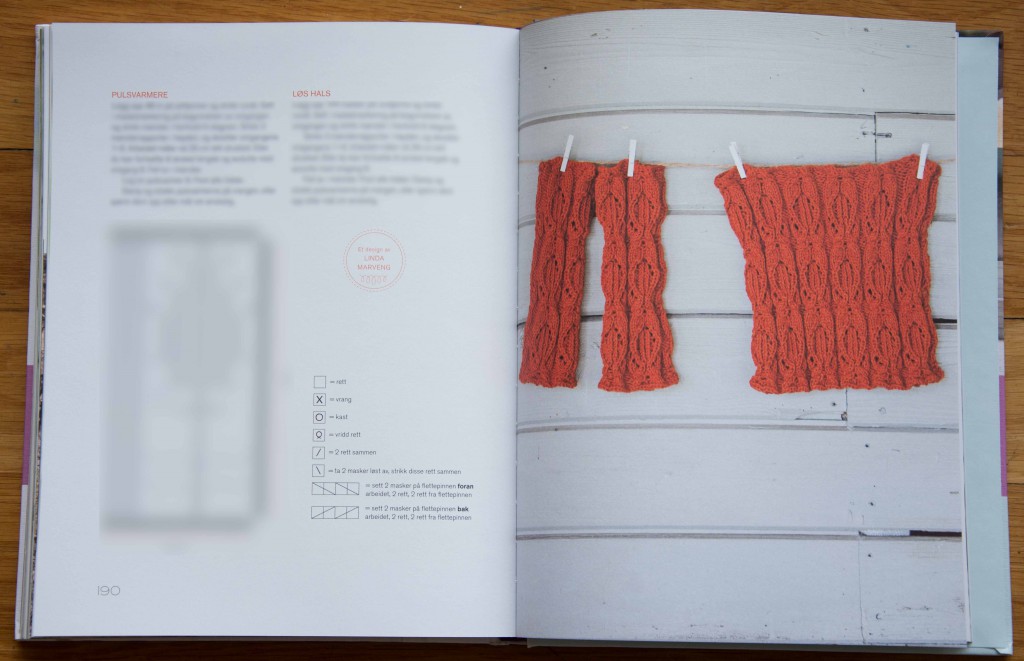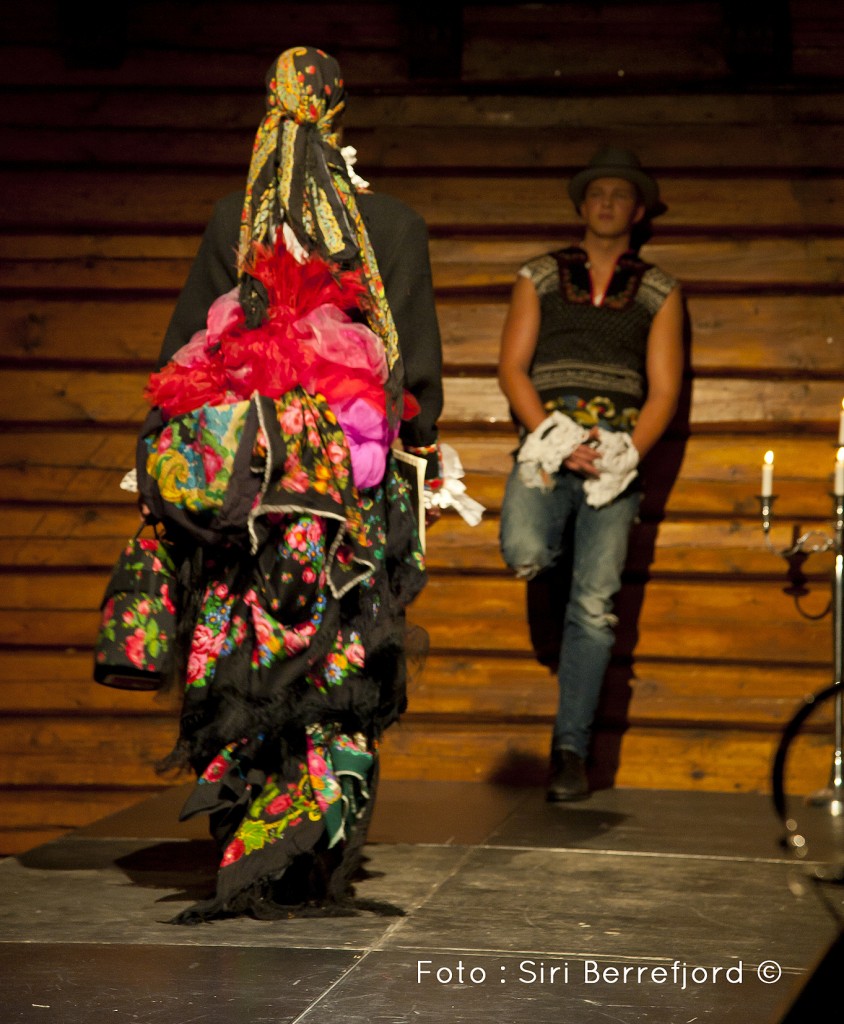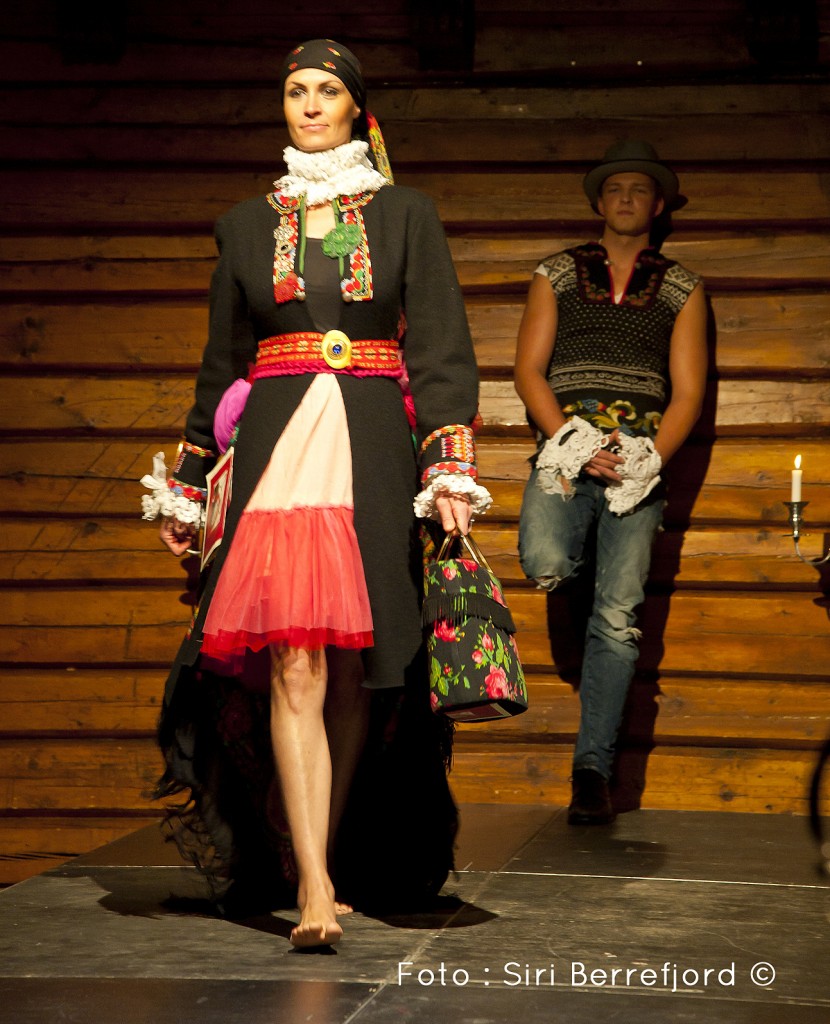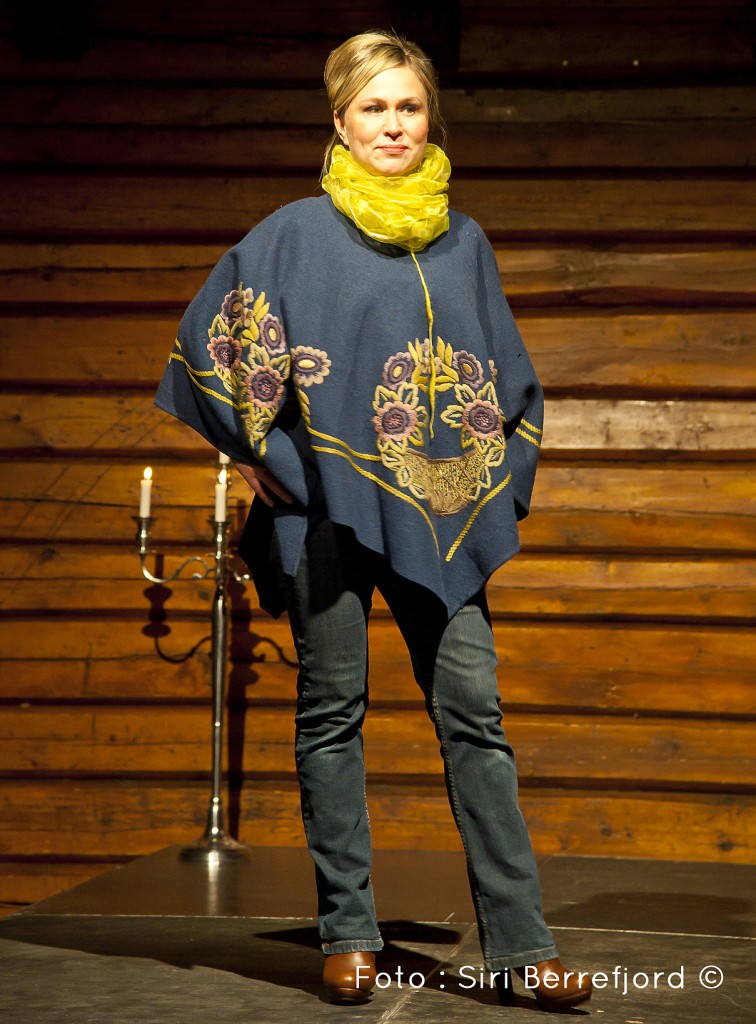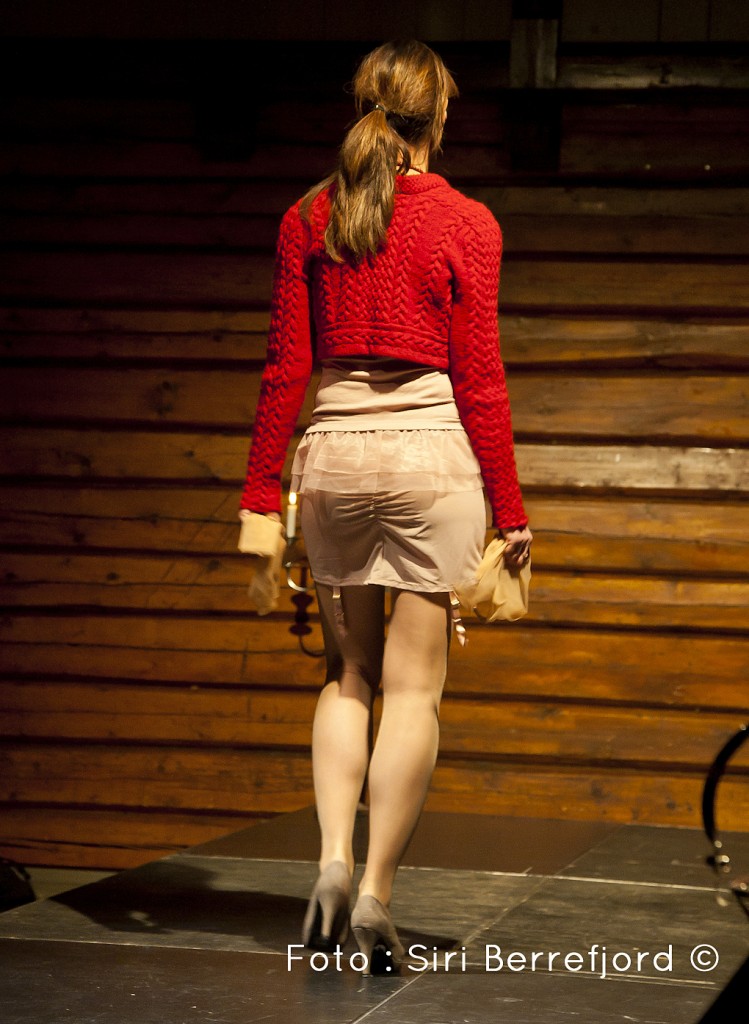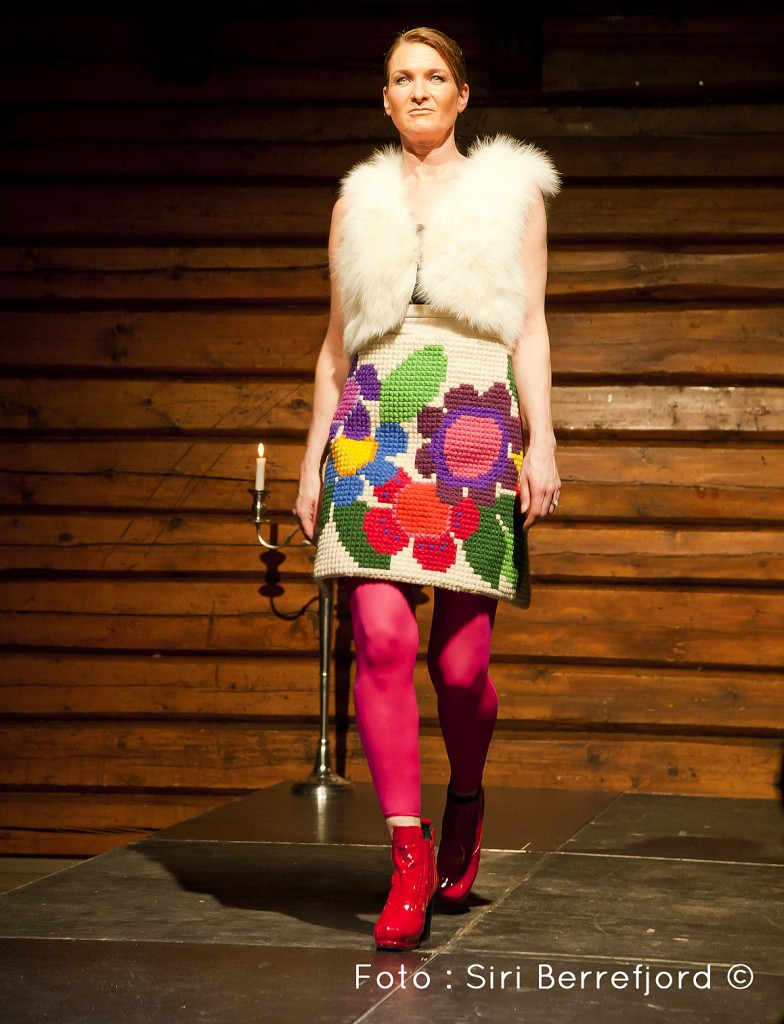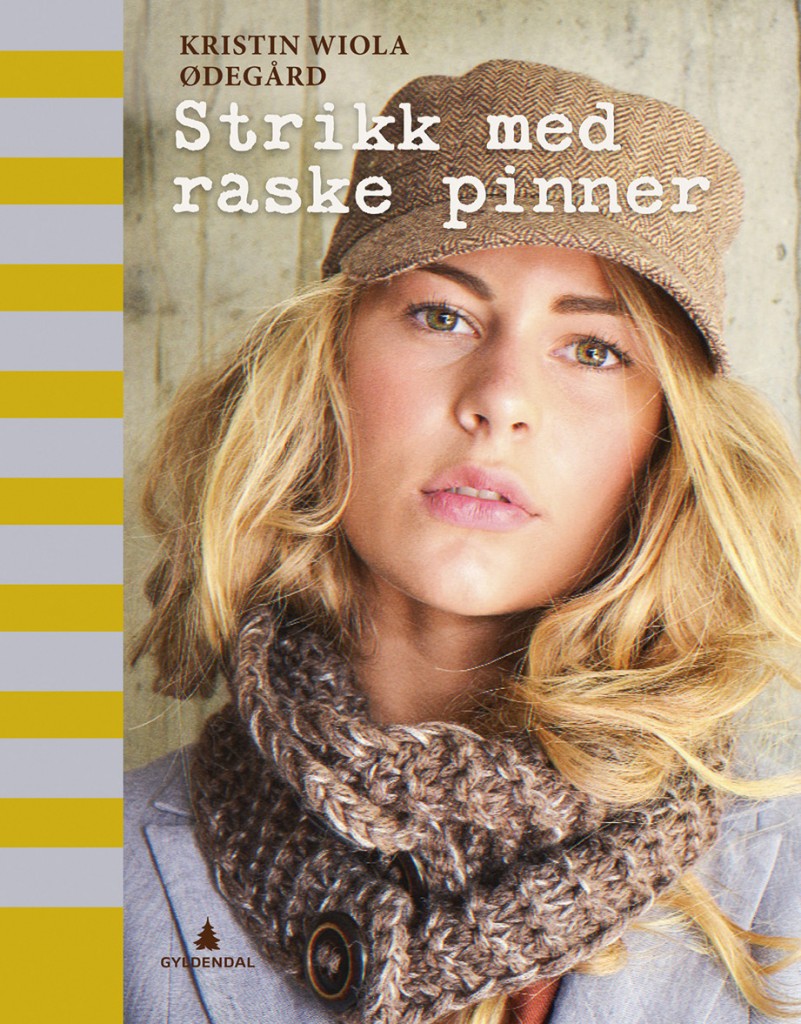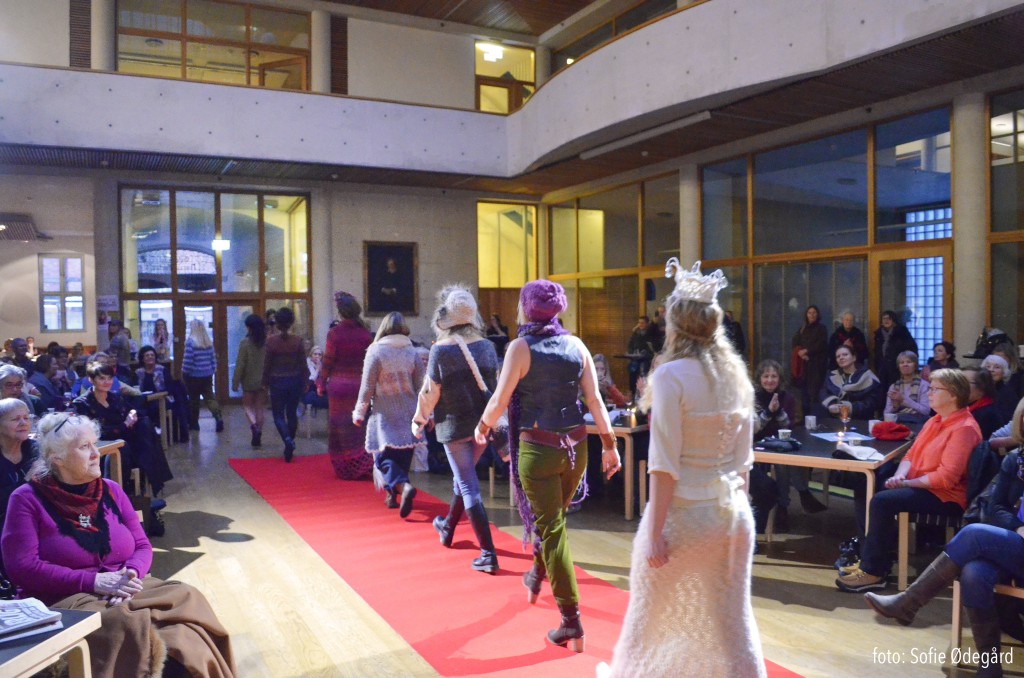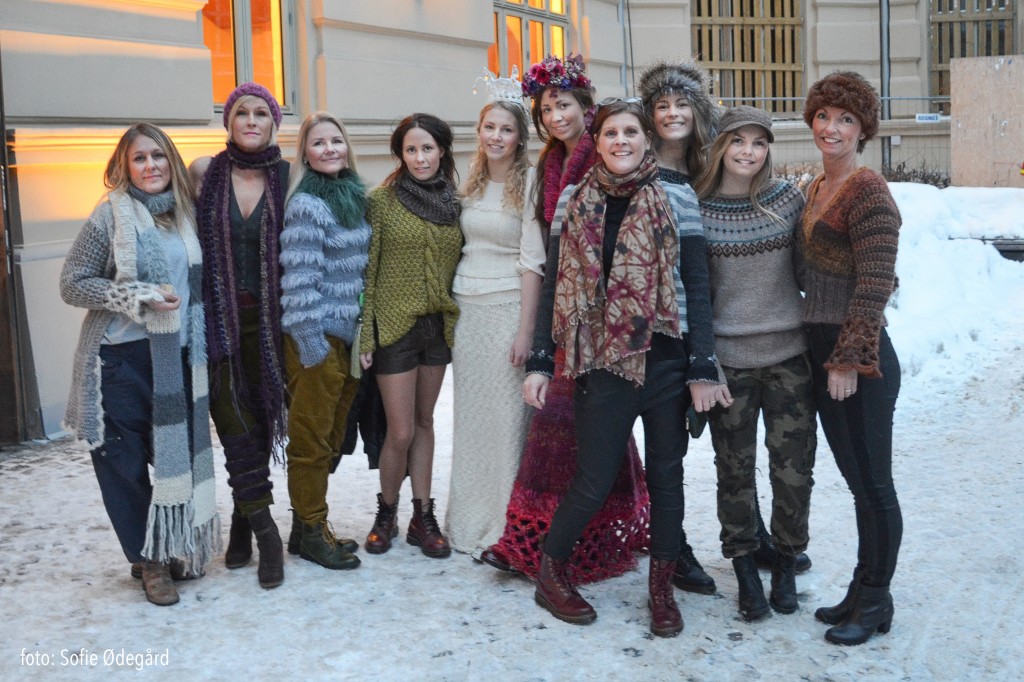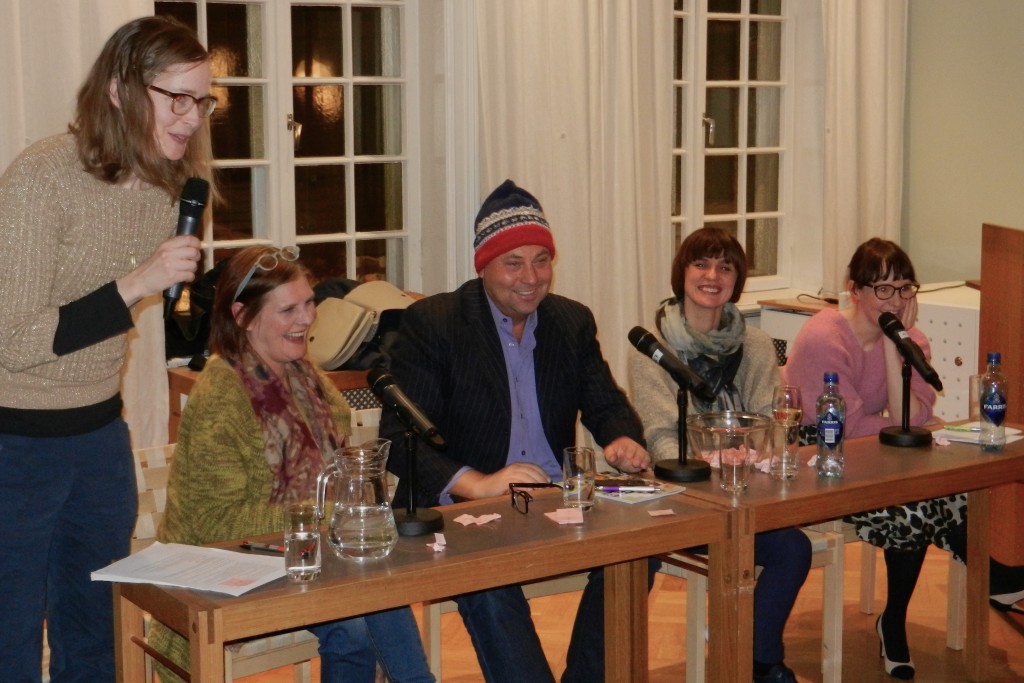 The topic of the debate organized by NFF, Norsk faglitterær forfatter og oversetter forening/Norwegian Non-fiction Writers And Translators Association was; What makes a knitting book successful, and what started the current knitting wave in Norway? The evening started with nearly a 100 attendees – a mixture of authors, journalists, reporters, knitters and other interested persons – facing a panel consisting of Pickles founders: Anna Enge and Heidi Grønvold, publisher MD Arve Juritzen of Marius Strikkebok (85 000 copies sold, see my post Craft Wave), author Kristin Wiola Ødegard, and chaired by Kristin Isaksen communications leader at NFF. First, the panel introduced themselves, and told us what they believed to be the future of the knitting book. The Pickles’ girls were surprised that their 3 books containing patterns, all previously published online, still sold like hotcakes and believed knitters wanted their patterns gathered in print form – a bit like the way a squirrel hoards or stash – and that the knitting wave is a revenge of the knitting nerd. You could hear the collective nod, since we all have a stash of yarns and books. In addition, knitting is now accepted in public spaces, formerly unheard of. Juritzen was taken back by the Marius book success, but believed it to be due to its storytelling ability, and told us that they now receive about 2 new knitting book proposals a week. Juritzen himself is convinced that a knitting book should be summed up in one sentence for it to have a chance of a success. Kristin’s book explains itself in the title, strikes a blow for the use of waste yarn, and was inspired by her customers’ demand at the yarn shop, Tjorven but is not published by Juritzen but by Gyldendal.
The topic of the debate organized by NFF, Norsk faglitterær forfatter og oversetter forening/Norwegian Non-fiction Writers And Translators Association was; What makes a knitting book successful, and what started the current knitting wave in Norway? The evening started with nearly a 100 attendees – a mixture of authors, journalists, reporters, knitters and other interested persons – facing a panel consisting of Pickles founders: Anna Enge and Heidi Grønvold, publisher MD Arve Juritzen of Marius Strikkebok (85 000 copies sold, see my post Craft Wave), author Kristin Wiola Ødegard, and chaired by Kristin Isaksen communications leader at NFF. First, the panel introduced themselves, and told us what they believed to be the future of the knitting book. The Pickles’ girls were surprised that their 3 books containing patterns, all previously published online, still sold like hotcakes and believed knitters wanted their patterns gathered in print form – a bit like the way a squirrel hoards or stash – and that the knitting wave is a revenge of the knitting nerd. You could hear the collective nod, since we all have a stash of yarns and books. In addition, knitting is now accepted in public spaces, formerly unheard of. Juritzen was taken back by the Marius book success, but believed it to be due to its storytelling ability, and told us that they now receive about 2 new knitting book proposals a week. Juritzen himself is convinced that a knitting book should be summed up in one sentence for it to have a chance of a success. Kristin’s book explains itself in the title, strikes a blow for the use of waste yarn, and was inspired by her customers’ demand at the yarn shop, Tjorven but is not published by Juritzen but by Gyldendal.
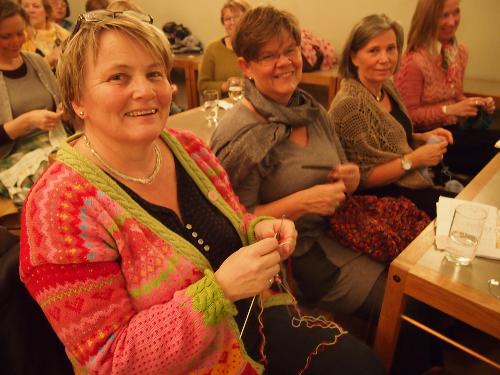
Photo: Hilde Østby, NFF
Second, after the interval, the knitting needles were still going strong, it was our turn to join the debate and ask questions. Researcher Ingunn Grimstad Klepp from Sifo, author of Ren Ull/Pure Wool, pointed out that the Knitting Wave did not start in Norway but that we were merely on the edge of it, and that it originated in the US or the UK. The opinions varied to why it occurred, but the Financial crisis; the creative urge that has arisen; the knitting society that the social media have helped to build; knitting’s ability to remove restlessness and to reclaim time, as well as how relaxing it is were some that were mentioned.
The debate sidetracked when the questions if yarn customers ask where the yarn is produced, and how it behaves were raised. Suddenly, we reached a why yarns pill debate, where the opinions differed especially on how much the person wearing it mattered – friction – but most agreed that it is due to the mixed fiber content (usually with man-made fibres), the degree of twist, short staple fibres, and loose knitting.
What is the next knitting hit going to be, asked Juritzen. No one had a clear answer but casual top-down kofter/traditional jackets was one of the suggestions. Designer and journalist – as well as Editor-in-chief – Nina Grønlund Sæther pointed out that designer Tove Fevang with more than 400 000 sold crafts books would be the right person to ask since she was present. Tove told us that her two latest books on childrens wear based on classic patterns had been successful. As for the next hit, she believes in the necessity of adding finishing techniques to her books since we can no longer rely on the transferring of skills between the generations. Grandmother will not always be around to take over the finishing process of a garment. In the photo above is Nina in the front, next to Denise Samson – designer and translator – Tove Fevang and me at the end (read: I did not know if I would fit into the photo).
Beautiful photos are important to attract the knitters, Kristin pointed out and Juritzen agreed. He had been surprised of the casual approach to this only a few decades back. Designer, blogger and podcaster Ann Myhre – aka Pinneguri/The Needle Lady – pointed out that with Ravelry and the free access to knitters’ own photos to link to the pattern page, that photos on single patterns did not necessarily need to be stunning. Ann’s own success with the Sinnasau/Where-the-wild-sheep-roam pattern proves her point. Just take a look at all the different versions of the jacket. Here is Ann’s summing up of the evening: nuppedebatten.
A reporter from the Norwegian State Broadcaster was present and could reveal that there will be yet another slow television program – see slow-tv-norwegian-movement-nrk – related to knitting this autumn. It will focus on hobbies and craft. We are waiting in anticipation, and comments flew in the audience that the level must be higher than on the previous program. Third, there was a book draw donated by the panel, and 7 happy winners were found. One of them, believed in giving something back, and donated a knitted Marius hat to Juritzen and you can see his happy face in the top photo.
It certainly was a heated debate at times, and it took turns we had not anticipated. Several of us would have liked to have seen Cappelen Damm, the largest of the Norwegian craft book publishers present in the panel, and a stricter chairman, but what a crowd, NFF had managed to attract. Finally, we were encouraged to send book proposals to Juritzen – yes, preferably to be summed up in a sentence – and to apply for grants at NFF. Here is the review, and a recording in Norwegian, with very low sound, from NFF: Strikkedilla.
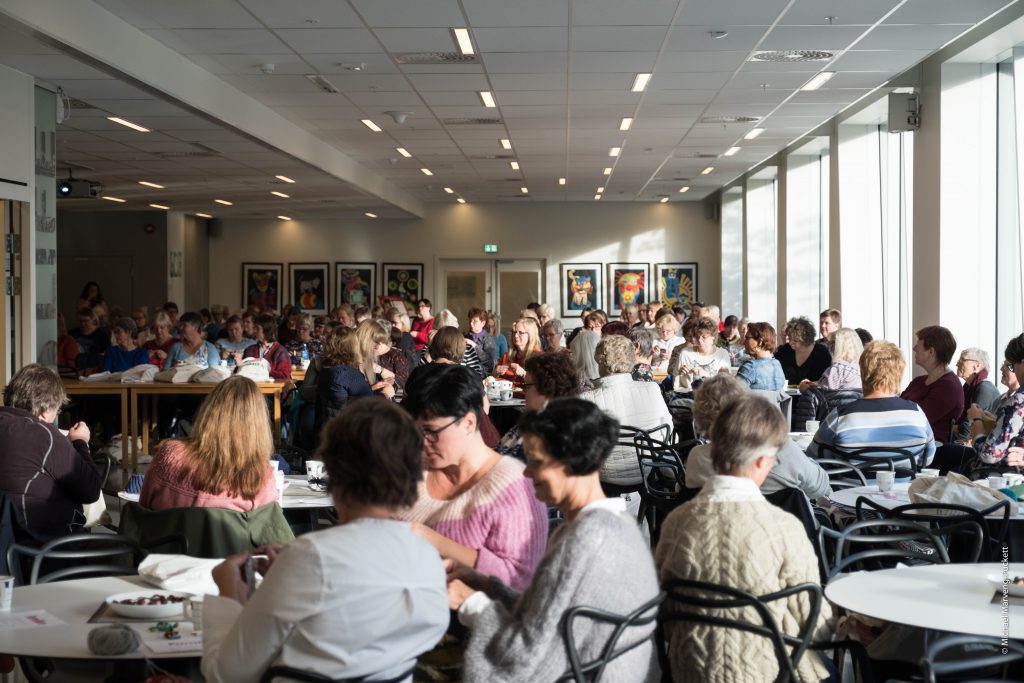 Another weekend, another knitting event, this time organised by the Norwegian magazine Familien held at their offices at Egmont at Nydalen in Oslo. This is the third time it is organised but the first time I was able to hold workshops here since it has coincided with Strikkehelgen in Stavanger. My workshop Smart Knitting Techniques was sold out in a day, so I was asked to hold a second one the same day. Both where overbooked and with more knitters wanting to join on the day. 135 women were attending the day at Egmont, where the day consisted of 2 presentations, strikkekino/knitting cinema, a small market hall, 2 different workshops and idea groups. Above you see the canteen filled with knitters.
Another weekend, another knitting event, this time organised by the Norwegian magazine Familien held at their offices at Egmont at Nydalen in Oslo. This is the third time it is organised but the first time I was able to hold workshops here since it has coincided with Strikkehelgen in Stavanger. My workshop Smart Knitting Techniques was sold out in a day, so I was asked to hold a second one the same day. Both where overbooked and with more knitters wanting to join on the day. 135 women were attending the day at Egmont, where the day consisted of 2 presentations, strikkekino/knitting cinema, a small market hall, 2 different workshops and idea groups. Above you see the canteen filled with knitters.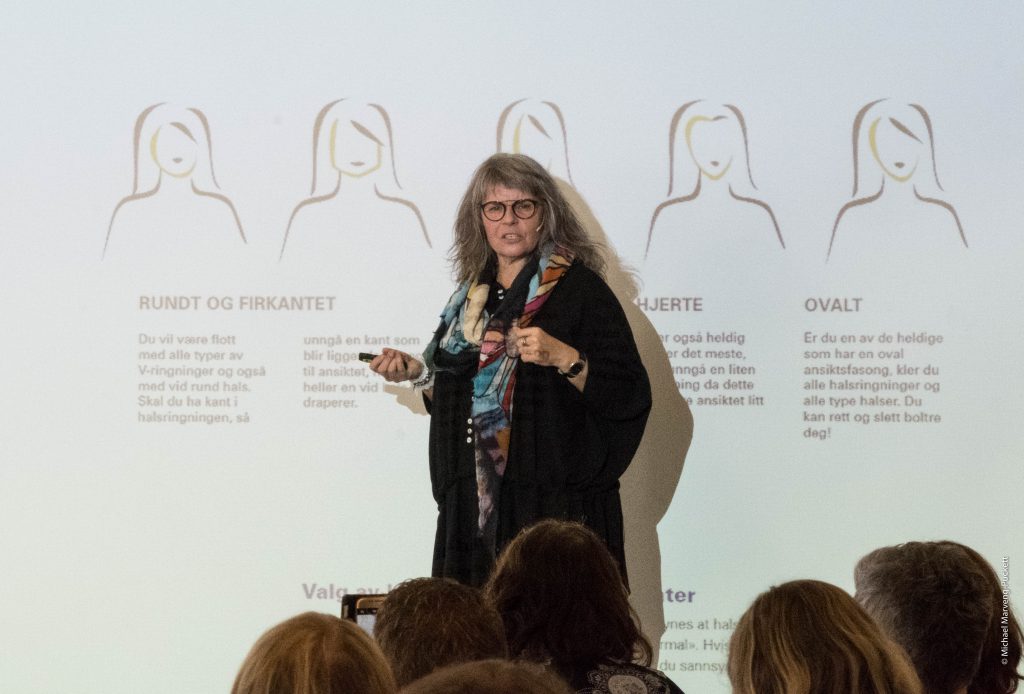 I listened to Kari Hestnes’ presentation and she spotted me. I had to come up on the stage and was an example of a body type with a long back. That was fun! I also had the opportunity to talk to the following designers who had stand in the market area (read: reception): Sidsel Høivik, Kristin Wiola Ødegård, Vanja Blix Langsrud, May Britt Bjella Zamori, and Anne-Stine Thuve. I enjoyed talking to knitters I know and new ones I had not met before as well as the Familien crew.
I listened to Kari Hestnes’ presentation and she spotted me. I had to come up on the stage and was an example of a body type with a long back. That was fun! I also had the opportunity to talk to the following designers who had stand in the market area (read: reception): Sidsel Høivik, Kristin Wiola Ødegård, Vanja Blix Langsrud, May Britt Bjella Zamori, and Anne-Stine Thuve. I enjoyed talking to knitters I know and new ones I had not met before as well as the Familien crew.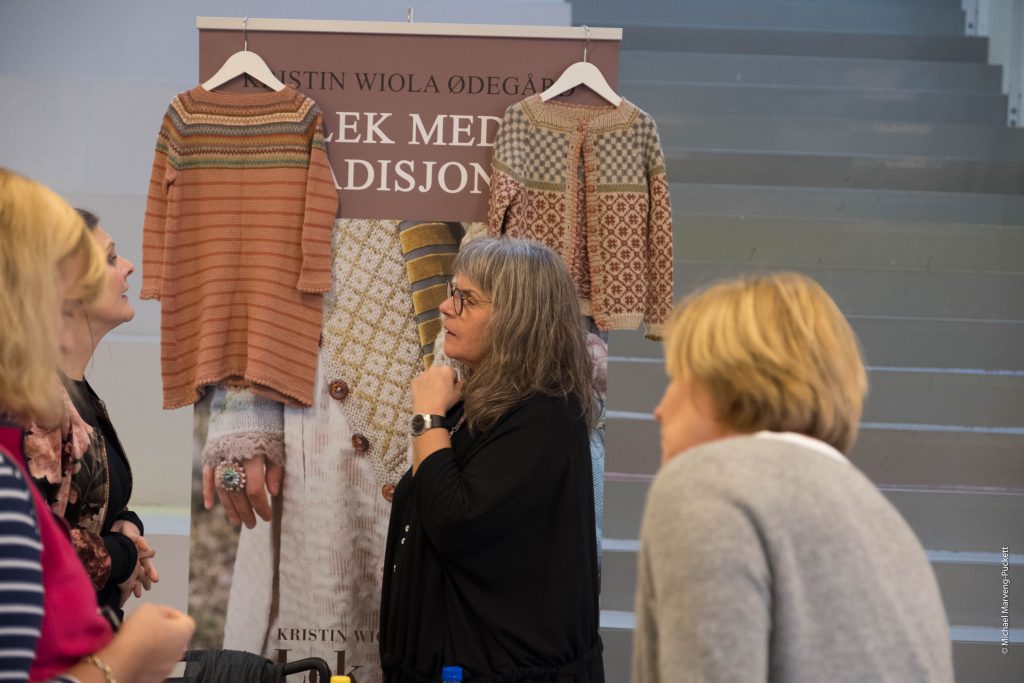 Here is Wiolastrikk, aka Kristin Wiola Ødegård’s stand, with her last book cover: Lek med tradisjoner on display. She is at the back to the left talking to Kari.
Here is Wiolastrikk, aka Kristin Wiola Ødegård’s stand, with her last book cover: Lek med tradisjoner on display. She is at the back to the left talking to Kari.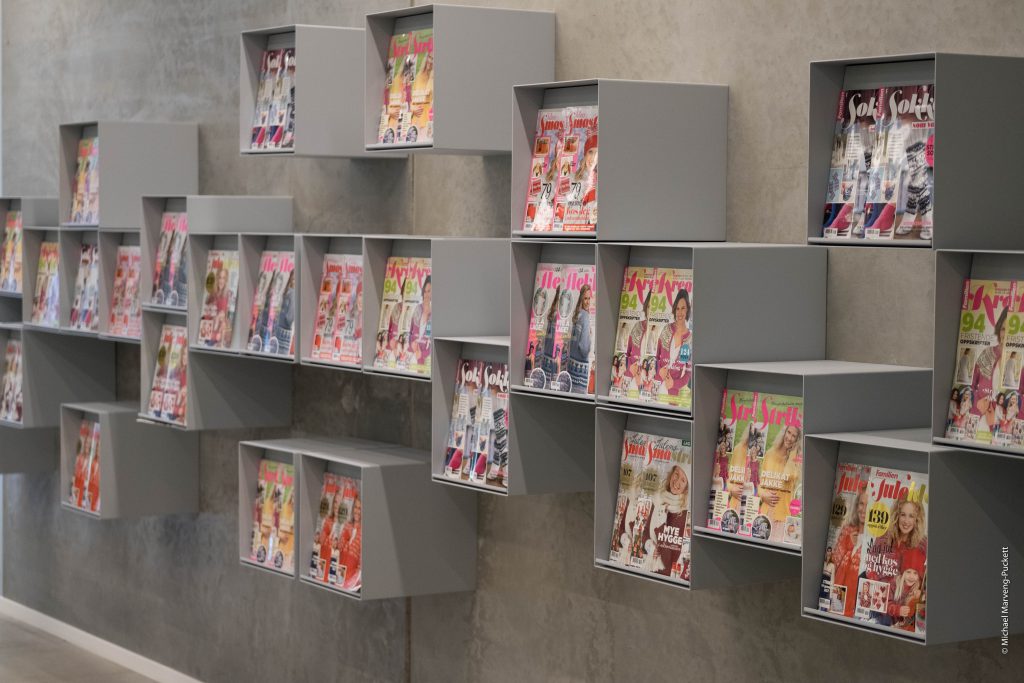 All their special magazines were displayed in the meeting room area, where the workshop and the knitting cinema took place.
All their special magazines were displayed in the meeting room area, where the workshop and the knitting cinema took place.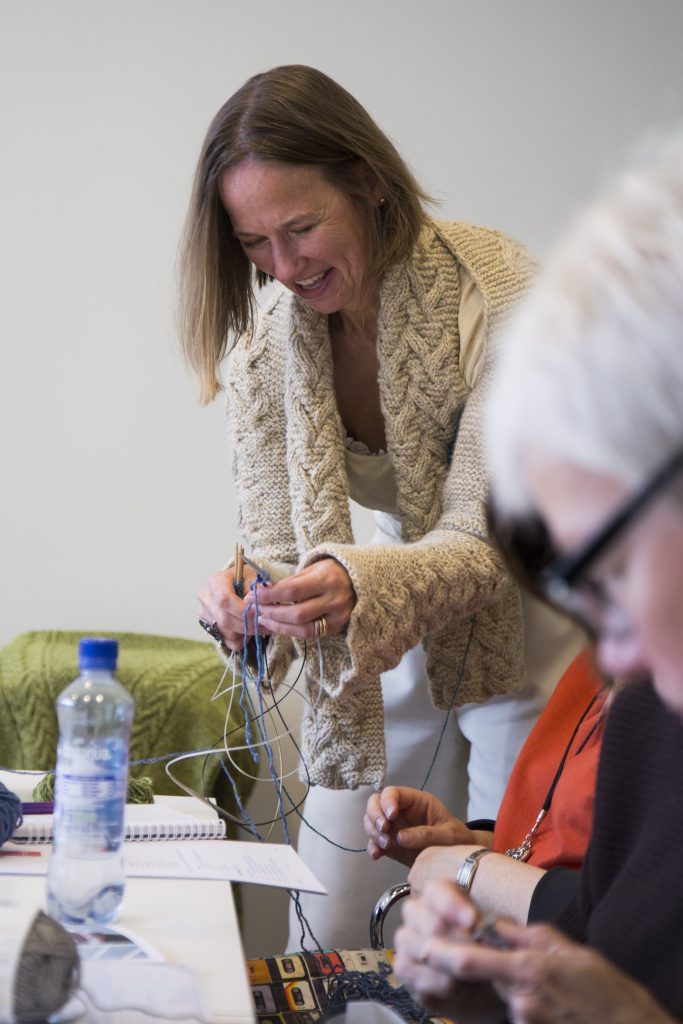 I was also photographed in action by event photographer Martine Kolstad during my workshop. I am demonstrating making a double hem using the cable cast on. I am wearing my design: Keya Shrug and Keya Scarf.
I was also photographed in action by event photographer Martine Kolstad during my workshop. I am demonstrating making a double hem using the cable cast on. I am wearing my design: Keya Shrug and Keya Scarf.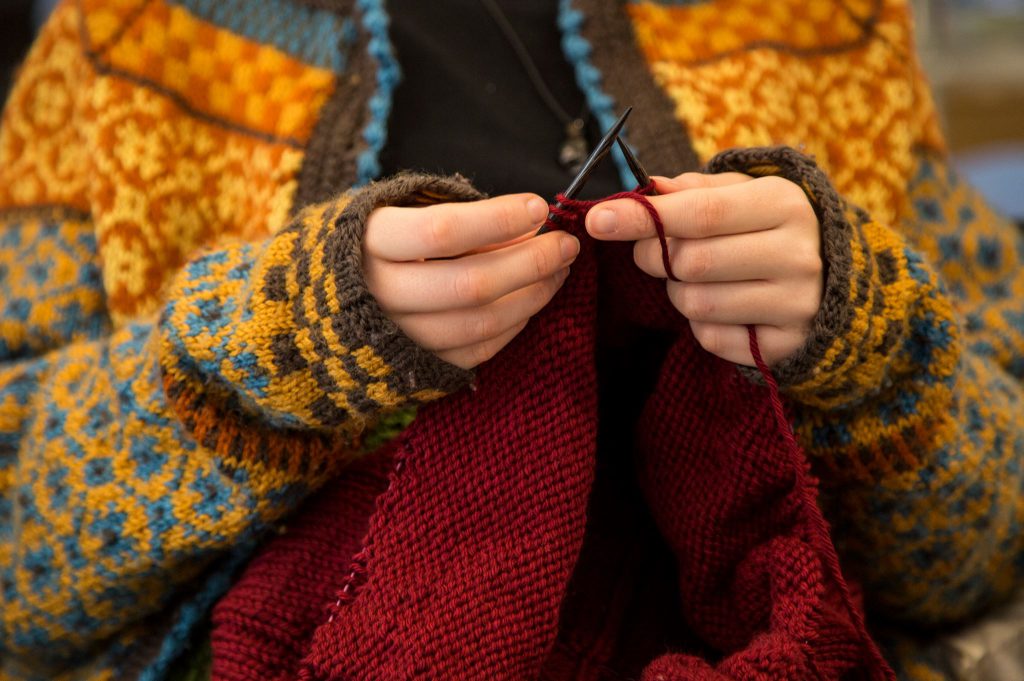 Here is one of the knitters wearing the popular Wiolakofta designed by Kristin Wiola Ødegård, captured by photographer Martine Kolstad. If you are on Facebook you will find several video made on the day, on the Familien page here: familien.egmont. On Friday, I am flying to Stavanger, south west Norway for the next and last set of workshops this fall for Strikkehelgen i Stavanger. Maybe I will see you there?
Here is one of the knitters wearing the popular Wiolakofta designed by Kristin Wiola Ødegård, captured by photographer Martine Kolstad. If you are on Facebook you will find several video made on the day, on the Familien page here: familien.egmont. On Friday, I am flying to Stavanger, south west Norway for the next and last set of workshops this fall for Strikkehelgen i Stavanger. Maybe I will see you there?


